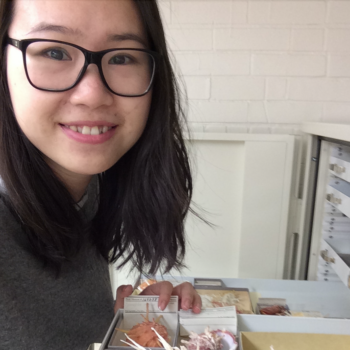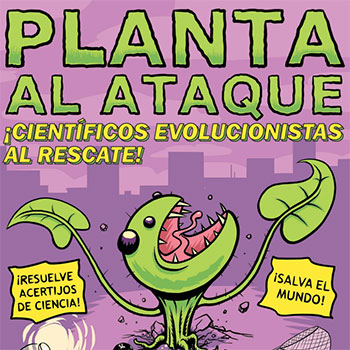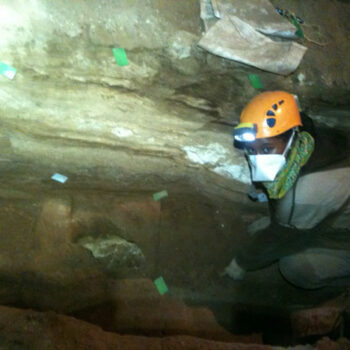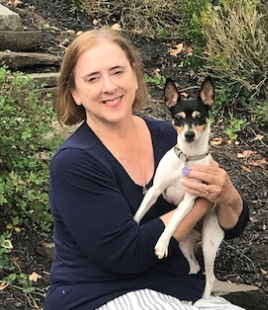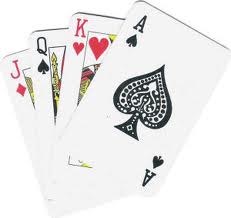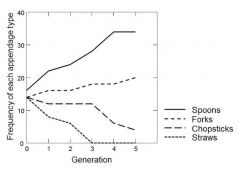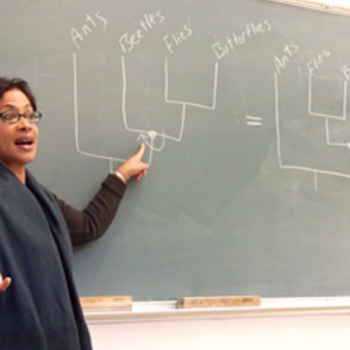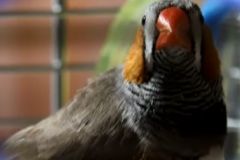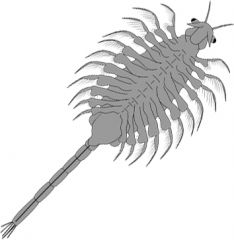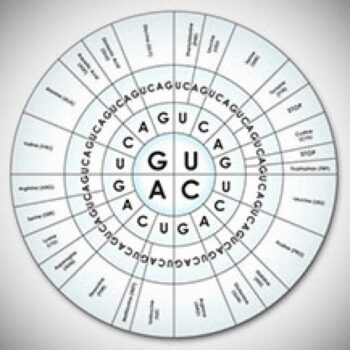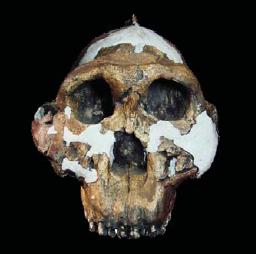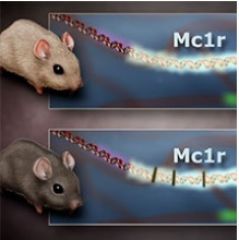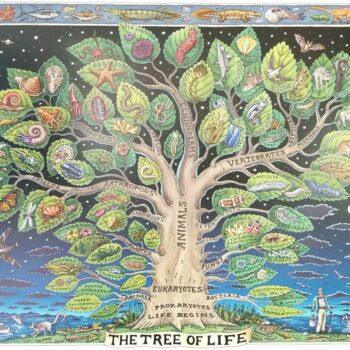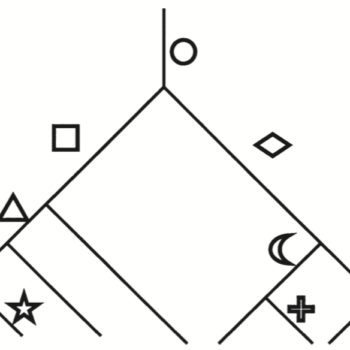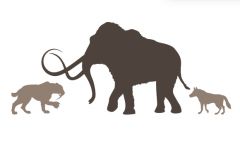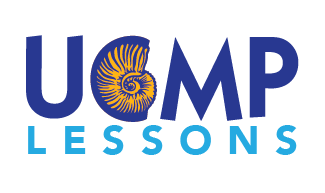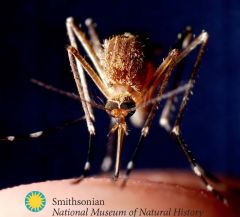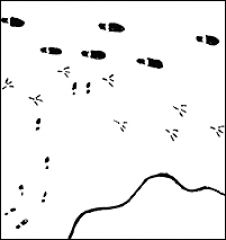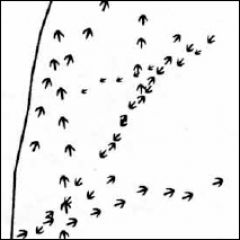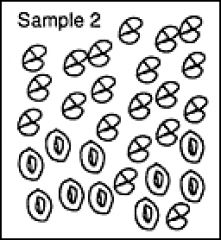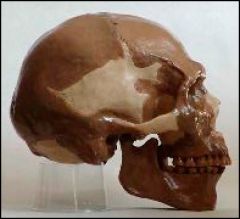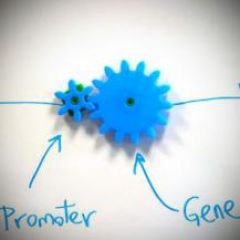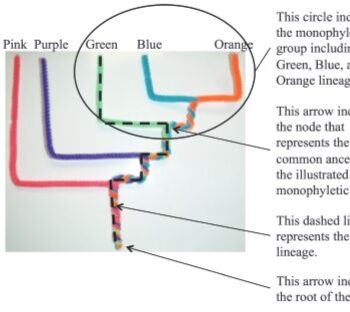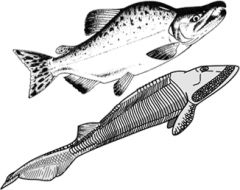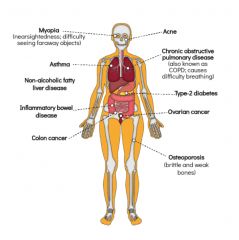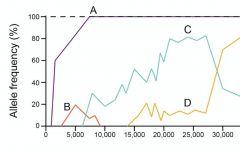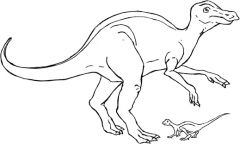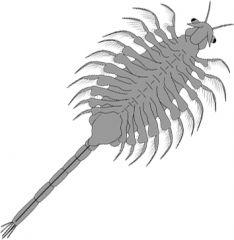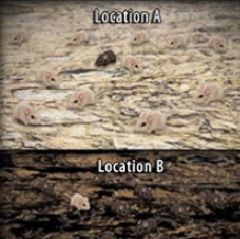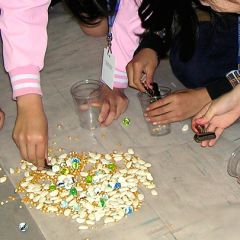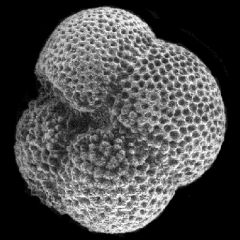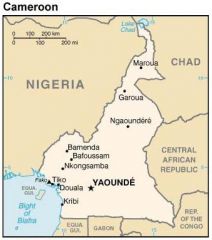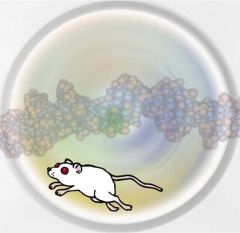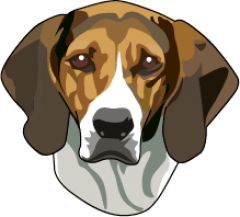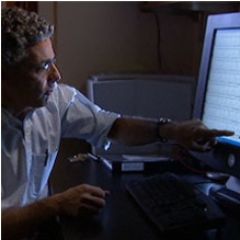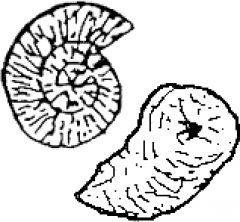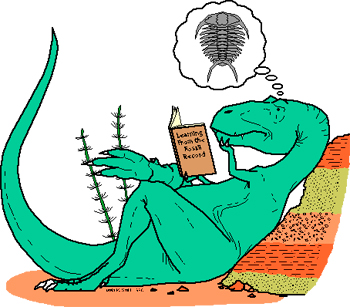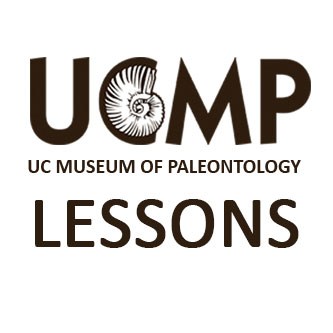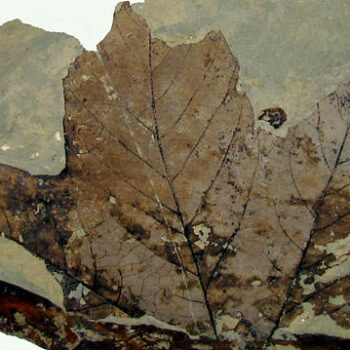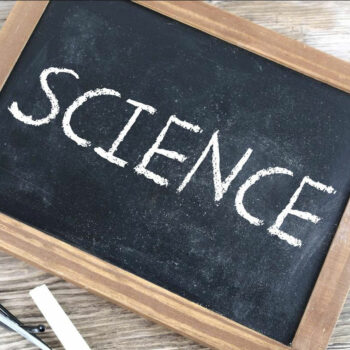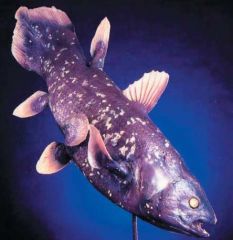Search by:
Found 91 resources:
Extinction vulnerability with Shan Huang, David Jablonski, and Stewart Edie
Grade Level(s):
- 9-12
- 13-16
Source:
- UC Museum of Paleontology
Resource type:
- Article
- Classroom activity
Time: 1.5 hrs
Overview
In this article (and the linked assignments and student readings), students examine and interpret data that Shan, David, and Stewart used to investigate whether the mollusk species that humans eat are inherently vulnerable to extinction. Use the tabs at the bottom of the feature to find related videos, assignments, and lessons to build this example into a lesson sequence on extinction.
Planta al ataque
Grade Level(s):
- 6-8
- 9-12
Source:
- UC Museum of Paleontology
Resource type:
- Classroom activity
- Comic
Time: 50 minutes
Overview
En este cómic/libro de actividades, conocerás a científicos que utilizan ideas evolutivas para resolver problemas médicos. También aprenderás sobre los árboles evolutivos mientras resuelves rompecabezas científicos y completas una actividad.
Plant on a Rampage
Grade Level(s):
- 6-8
- 9-12
Source:
- UC Museum of Paleontology
Resource type:
- Classroom activity
- Comic
Time: 50 minutes
Overview
In this printable comic/activity book, you'll meet scientists who use evolutionary ideas to solve medical problems. You'll also learn about evolutionary trees while you solve science puzzles and complete a craft.
Extinction with Melissa Kemp and Liz Hadly
Grade Level(s):
- 9-12
- 13-16
Source:
- UC Museum of Paleontology
Resource type:
- Article
- Classroom activity
Time: 1.5 hours
Overview
In this article (and the linked assignments and student readings), students examine and interpret data that Melissa and Liz used to study the extinction bias in Caribbean lizards. Use the tabs at the bottom of the feature to find related videos, assignments, and lessons to build this example into a lesson sequence on extinction.
The causes of mutation with Molly Przeworski and Felix Wu
Grade Level(s):
- 13-16
Source:
- UC Museum of Paleontology
Resource type:
- Classroom activity
Time: 1.5 hours
Overview
In this article (and the linked assignments and student readings), students examine and interpret data that Molly and Felix used to study the causes of mutations that matter most for evolution. Use the tabs at the bottom of the feature to find related videos, assignments, and lessons to build this example into a lesson sequence on mutation.
Artificial Selection with Elaine Ostrander and Team
Grade Level(s):
- 9-12
- 13-16
Source:
- UC Museum of Paleontology
Resource type:
- Classroom activity
Time: 1 hr
Overview
In this article (and the linked assignments and student readings), students examine and interpret data that the team used to study the genes undergoing artificial selection during the development of different dog breeds. Use the tabs at the bottom of the feature to find related videos, assignments, and lessons to build this example into a lesson sequence on artificial selection.
Sexual Selection with Maydianne Andrade
Grade Level(s):
- 9-12
- 13-16
Source:
- UC Museum of Paleontology
Resource type:
- Classroom activity
Time: 1 hour
Overview
In this article (and the linked assignments and student readings), students examine and interpret data that Maydianne collected to help her figure out why redback spiders evolved a mating behavior in which the male spider is often killed by the female spider. Use the tabs at the bottom of the feature to find related videos, assignments, and lessons to build this example into a lesson sequence on sexual selection.
Great Fossil Find
Grade Level(s):
- 6-8
- 9-12
- 13-16
Source:
- ENSI
Resource type:
- Classroom activity
Time: 40 minutes
Overview
Students are taken on an imaginary fossil hunt and hypothesize as to the identity of the creature they discover. Students revise their hypotheses as new evidence is "found."
Selection and evolution with a deck of cards
Grade Level(s):
- 9-12
- 13-16
Source:
- Evolution: Education and Outreach
Resource type:
- Classroom activity
Time: 1-2 class periods
Overview
This classroom exercise introduces the concept of evolution by natural selection in a hypothesis-driven, experimental fashion, using a deck of cards.
Making Cladograms
Grade Level(s):
- 9-12
Source:
- ENSI
Resource type:
- Classroom activity
Time: One class period
Overview
This lesson introduces students to the building of cladograms as evolutionary trees, showing how shared derived characters can be used to reveal degrees of relationship.
Hardy-Weinberg Equilibrium According to Hoyle
Grade Level(s):
- 9-12
Source:
- Cronkite, Donald
Resource type:
- Classroom activity
Time: One class period
Overview
Students achieve an understanding of the Hardy-Weinberg Equilibrium by using decks of playing cards without recourse to algebra.
Spoons, forks, chopsticks, straws: Simulating natural selection
Grade Level(s):
- 6-8
- 9-12
- 13-16
Source:
- Kathryn Flinn
Resource type:
- Classroom activity
Time: 50 minutes
Overview
In this classroom activity, students participate in demonstrating how natural selection works. They play the roles of predators with different feeding appendages (spoons, forks, chopsticks, or straws) and compete to gather beans as prey.
Sounds Around
Grade Level(s):
- K-2
Source:
- Janulaw, Sharon
Resource type:
- Classroom activity
Time: 30 minutes
Overview
Students use their sense of hearing outdoors to discover things in their world.
Sniff and Guess
Grade Level(s):
- K-2
Source:
- Janulaw, Sharon
Resource type:
- Classroom activity
Time: 40 minutes
Overview
Students use their sense of smell to identify the contents of Mystery Odor Cans.
Two- and ten-minute trees
Grade Level(s):
- 3-5
- 6-8
- 9-12
- 13-16
Source:
- UC Museum of Paleontology
Resource type:
- Classroom activity
Time: 2-10 minutes
Overview
Use these quick and simple classroom activities to better develop your students' tree-thinking skills. Each takes just a few minutes and helps reinforce key ideas about tree reading and common ancestry.
Reconstruction
Grade Level(s):
- 3-5
Source:
- UC Museum of Paleontology
Resource type:
- Classroom activity
Time: 50-60 minutes
Overview
Students reconstruct sentences by reassembling the words that have been cut apart.
Preying on Beans
Grade Level(s):
- 3-5
Source:
- UC Museum of Paleontology
Resource type:
- Classroom activity
Time: 50-60 minutes
Overview
Students act as predators searching for prey (beans) in two different settings to demonstrate the processes of adaptation and selection.
Predicting evolutionary relationships
Grade Level(s):
- 9-12
Source:
- NOVA
Resource type:
- Classroom activity
Time: 1 hour
Overview
Students compare the sequence of amino acids in a gene shared between humans and six other organisms and infer evolutionary relationships among the species.
Population genetics, selection, and evolution
Grade Level(s):
- 13-16
Source:
- Howard Hughes Medical Institute
Resource type:
- Classroom activity
Time: Two to three 50-minute class periods
Overview
This hands-on activity, used in conjunction with a short film, teaches students about population genetics, the Hardy-Weinberg principle, and how natural selection alters the frequency distribution of heritable traits. It
Origami Birds
Grade Level(s):
- 9-12
Source:
- ENSI
Resource type:
- Classroom activity
Time: Three to four class periods
Overview
Students build and evolve and modify paper-and-straw "birds" to simulate natural selection acting on random mutations.
Oh Say, What Can You See?
Grade Level(s):
- K-2
Source:
- Janulaw, Sharon
Resource type:
- Classroom activity
Time: 30 minutes
Overview
Students walk outdoors to use their sense of sight and record and compare their observations.
Observing Brine Shrimp
Grade Level(s):
- 3-5
Source:
- UC Museum of Paleontology
Resource type:
- Classroom activity
Time: 50-60 minutes
Overview
Students observe brine shrimp eggs, create an appropriate environment for their survival, and observe their growth.
Not Just a Theory
Grade Level(s):
- 9-12
- 13-16
Source:
- UC Museum of Paleontology
Resource type:
- Classroom activity
Time: 10 to 15 minutes
Overview
Students engage in an activity that clarifies the scientific meaning of the term theory.
Natural selection and evolution of rock pocket mouse populations
Grade Level(s):
- 13-16
Source:
- Howard Hughes Medical Institute
Resource type:
- Classroom activity
Time: 50 minutes
Overview
This lesson serves as an extension to the Howard Hughes Medical Institute short film The Making of the Fittest: Natural Selection and Adaptation. It provides an opportunity for students to analyze amino acid data and draw conclusions about the evolution of coat-color phenotypes in the rock pocket mouse.
Mystery Meat
Grade Level(s):
- 9-12
Source:
- Collins, Jennifer
Resource type:
- Classroom activity
Time: One to two class periods
Overview
In this lesson students follow the steps of scientists Steve Palumbi (Stanford University) and Scott Baker (University of Oregon), who used DNA data (Barcoding) to reveal the species identifications of kujira (whale meat) from foreign markets. Their study used DNA data to identify unknown organisms in order to investigate whether whales are being illegally hunted and sold as meat. By going through the lesson, students practice various aspects of the process of science by asking scientific questions, collecting and analyzing data, comparing their results with those of the real researchers, and finally determining possible next steps.
The Natural Selection Game
Grade Level(s):
- 9-12
- 13-16
Source:
- Gendron, Robert
Resource type:
- Classroom activity
Time: 1 to 2 class periods
Overview
This is a board game that simulates natural selection. It is suitable for an introductory biology class and for more advanced classes where you could go into more detail on important principles such as the role of variation and mutation.
The Missing Link
Grade Level(s):
- 13-16
Source:
- Strasser, M. Elizabeth
Resource type:
- Classroom activity
Time: 45 minutes
Overview
The setting for this case study is a paleontological dig in East Africa, where an undergraduate student has unearthed part of what appears to be an ancestral human skull. Students read the story and then examine a number of primate skulls. They are asked to build a phylogeny based on their observations.
Molecular genetics of color mutations in rock pocket mice
Grade Level(s):
- 13-16
Source:
- Howard Hughes Medical Institute
Resource type:
- Classroom activity
Time: 50 minutes
Overview
This lesson requires students to transcribe and translate portions of the wild-type and mutant rock pocket mouse Mc1r genes and compare sequences to identify the locations and types of mutations responsible for the coat color variation described in a short film.
Modeling Evolutionary Relationships with Trees
Grade Level(s):
- 6-8
- 9-12
Source:
- Shape of Life
Resource type:
- Classroom activity
Time: 100-120 minutes
Overview
In this lesson, students will examine a beautiful tree of life poster by artist Ray Troll and use it as a launchpad to explore evolutionary, or phylogenetic trees. Students will take a pre-assessment to address misconceptions about phylogenetic trees before completing a modeling activity to give them a better understanding of how trees are used to model evolutionary relationships.
The great clade race: Zombie Edition
Grade Level(s):
- 9-12
- 13-16
Source:
- Martindale, Rowan and Goldsmith, David
Resource type:
- Classroom activity
Time: 30-50 minutes
Overview
This activity uses a simple puzzle to get students to use cladistic thinking without bogging them down with terminology.
The Checks Lab
Grade Level(s):
- 9-12
- 13-16
Source:
- ENSI
Resource type:
- Classroom activity
Time: One class period
Overview
Students construct plausible scenarios using bank checks to learn how human values and biases influence observation and interpretation.
Mealworm Metamorphosis
Grade Level(s):
- 3-5
Source:
- UC Museum of Paleontology
Resource type:
- Classroom activity
Time: 50-60 minutes for initial observation and set up. Approx. 10-15 minutes for daily observations.
Overview
Students will observe offspring (mealworms) that do not initially resemble their parent organism (darkling beetles) throughout complete metamorphosis. Students will also create and maintain an appropriate habitat for the mealworms.
McKittrick Fossil Find Classroom Activity
Grade Level(s):
- 3-5
- 6-8
- 9-12
Source:
- UC Museum of Paleontology
Resource type:
- Classroom activity
Time: 50 minutes
Overview
In this lesson, students play the roles of paleontologists on a dig. They “unearth” a few fossils at a time and attempt to reconstruct the animal the fossils represent.
Textures Are Everywhere
Grade Level(s):
- K-2
- 3-5
Source:
- Janulaw, Sharon
Resource type:
- Classroom activity
Time: 30 Minutes
Overview
Students use their sense of touch outdoors and record and compare their observations.
Malaria
Grade Level(s):
- 9-12
- 13-16
Source:
- Smithsonian National Museum of Natural History
Resource type:
- Classroom activity
Time: Seven 50-minute class periods
Overview
In this advanced 4-lesson curriculum unit, students examine evidence to compare four different explanations for why many malarial parasites are resistant to antimalarial drugs; investigate how scientific arguments using G6PD data show support for natural selection in humans; design an investigation using a simulation based on the Hardy-Weinberg principle to explore mechanisms of evolution; and apply their understanding to other alleles that have evolved in response to malaria.
Testing a hypothesis
Grade Level(s):
- 9-12
Source:
- Howard Hughes Medical Institute
Resource type:
- Classroom activity
Time: 50 minutes
Overview
Students watch a short film about natural selection in humans and answer questions on a worksheet that reinforce the evolutionary story behind malaria and sickle cell anemia prevalence.
Making 3D phylogenetic trees with mobiles
Grade Level(s):
- 9-12
Source:
- Carolina
Resource type:
- Classroom activity
Time: 30 minutes
Overview
Students create three-dimensional trees in the form of mobiles so that the branching nodes pivot. Students can manipulate the mobile to see the relationships more clearly and combat common misconceptions about trees.
Tennis Shoe Detectives
Grade Level(s):
- 3-5
Source:
- Heindel, Sharon
Resource type:
- Classroom activity
Time: Two 40-minute periods
Overview
Students make observations, examine data, and form hypotheses about a set of footprints and what they can tell us.
Taster’s Choice
Grade Level(s):
- K-2
Source:
- Janulaw, Sharon
Resource type:
- Classroom activity
Time: 40 minutes
It’s All Relative
Grade Level(s):
- 3-5
Source:
- UC Museum of Paleontology
Resource type:
- Classroom activity
Time: One class period
Overview
In this lesson, students find pictures of living things and arrange them in collages, categorizing them according to which they think are more closely related to which.
Investigating Natural Selection
Grade Level(s):
- 9-12
- 13-16
Source:
- National Academy of Sciences
Resource type:
- Classroom activity
Time: Three class periods
Overview
Students experience one mechanism for evolution through a simulation that models the principles of natural selection and helps answer the question: How might biological change have occurred and been reinforced over time?
Investigating Common Descent: Formulating Explanations and Models
Grade Level(s):
- 9-12
- 13-16
Source:
- National Academy of Sciences
Resource type:
- Classroom activity
Time: Two class periods
Overview
Students formulate explanations and models that simulate structural and biochemical data as they investigate the misconception that humans evolved from apes.
Interpreting the Tracks
Grade Level(s):
- 6-8
Source:
- UC Museum of Paleontology
Resource type:
- Classroom activity
Time: Two to three class periods
Overview
Students discover the relationships among foot length, leg length, stride length and speed in bipedal animals that provide clues about dinosaur speed.
Inferring Ancient Environments from Fossil Foraminifera
Grade Level(s):
- 6-8
Source:
- Olson, Hilary
Resource type:
- Classroom activity
Time: 40-50 minutes
Overview
Students analyze actual data from samples of microfossils collected from a particular locality. They use this data to infer water depths in the Miocene in order to locate potential petroleum reserves.
In the Dark
Grade Level(s):
- K-2
Source:
- Janulaw, Sharon
Resource type:
- Classroom activity
Time: 30 minutes
How Much is a Billion
Grade Level(s):
- 3-5
- 6-8
Source:
- Monk, Anne
Resource type:
- Classroom activity
Time: Variable
Overview
In this activity, students get a sense of how big a billion really is, which is necessary in order to understand deep time.
Hominid Cranium Comparison (The “Skulls” Lab)
Grade Level(s):
- 9-12
- 13-16
Source:
- ENSI
Resource type:
- Classroom activity
Time: One to two class periods
Overview
Students describe, measure and compare cranial casts from contemporary apes, modern humans, and fossil hominids to discover some of the similarities and differences between these forms and to see the pattern leading to modern humans.
Gene switches
Grade Level(s):
- 13-16
Source:
- Howard Hughes Medical Institute
Resource type:
- Classroom activity
Time: Two 45-minute blocks
Overview
This lesson explains how genetic switches function and their role in the process of evolution through the use of clips from the HHMI DVD, Evolution: Constant Change and Common Threads, and the construction of a model. This activity can be done as a demonstration, a student inquiry activity, or a combination of the two.
Using pipe cleaners to bring the Tree of Life to life
Grade Level(s):
- 6-8
- 9-12
- 13-16
Source:
- American Biology Teacher
Resource type:
- Classroom activity
Time: 15 minutes
Overview
Students build a phylogenetic tree from pipe cleaners that allows them to rotate branches, compare topologies, map complete lineages, identify informative phylogenetic features, and examine the effects of superficial structural changes on the tree.
Form and Function
Grade Level(s):
- K-2
Source:
- Janulaw, Sharon
Resource type:
- Classroom activity
Time: One period
Overview
Students select a part of a plant or animal and indicate how the part supports the needs of the living thing.
Extinction
Grade Level(s):
- K-2
Source:
- Janulaw, Sharon
Resource type:
- Classroom activity
Time: 20 minutes
Overview
Students are shown illustrations of living things and extinct life forms, which they compare and categorize as living or extinct.
Evolution of human skin color
Grade Level(s):
- 9-12
- 13-16
Source:
- Smithsonian National Museum of Natural History
Resource type:
- Classroom activity
Time: Seven to ten 50 minute class periods
Overview
Students examine evidence for the relationship between UV and melanin in other animals; investigate the genetic basis for constitutive skin color humans; learn to test for natural selection in mouse fur color; investigate how interactions between UV and skin color in humans can affect fitness; and explore data on migrations and gene frequency to show convergent evolution of skin color.
Evolution and health: What is a mismatch disease?
Grade Level(s):
- 9-12
Source:
- BiteScis
Resource type:
- Classroom activity
Time: 50 minutes
Overview
In this reading-, writing-, and discussion-based activity, students learn about how changes in the environment can influence the phenotype of organisms. More specifically, students will be investigating the concept of a mismatch disease and how it relates to many present human phenotypes that are no longer beneficial.
Evolution and E. coli: Natural selection in a constant environment
Grade Level(s):
- 9-12
Source:
- BiteScis
Resource type:
- Classroom activity
Time: Two to three 50-minute class periods
Overview
In this reading-, writing-, and discussion-based activity, students explore bacterial evolution occurring in a stable environment, which counters the intuitive misconception that environmental change is a necessary component to natural selection. A landmark study provides the backdrop against which students can challenge their thinking about what it means for a population to evolve.
Evolution and Antibiotic Resistance
Grade Level(s):
- 9-12
- 13-16
Source:
- WGBH
Resource type:
- Classroom activity
Time: One to three class periods
Overview
Students learn why evolution is at the heart of a world health threat by investigating the increasing problem of antibiotic resistance in such menacing diseases as tuberculosis.
Viruses and Host Evolution
Grade Level(s):
- 9-12
Source:
- Chamberlain, Don
Resource type:
- Classroom activity
Time: Four class periods
Overview
Students learn about natural selection in rabbits by observing the effects of a virus on the Australian rabbit population.
Variations in the clam species Clamys sweetus
Grade Level(s):
- 9-12
Source:
- Howard Hughes Medical Institute
Resource type:
- Classroom activity
Time: 3 x 45-minute sessions
Overview
This series of hands-on activities complements the HHMI DVD Evolution: Constant Change and Common Threads and has been designed to engage students in thinking about the mechanism of natural selection by encouraging them to formulate questions that can be answered through scientific investigation, data collection, and pattern recognition.
Variation
Grade Level(s):
- K-2
Source:
- Janulaw, Sharon
Resource type:
- Classroom activity
Time: One period
Overview
Students look at populations of living things and identify variations in physical features.
Dogs and Turnips
Grade Level(s):
- 6-8
Source:
- UC Museum of Paleontology
Resource type:
- Classroom activity
Time: 30 minutes each for three sessions
Overview
In this lesson students attempt to assemble a meaningful sentence by successively turning over cards with words on them. The point is made that we change our ideas of what a story may be as we gather more information.
Diversity Walk
Grade Level(s):
- 3-5
Source:
- UC Museum of Paleontology
Resource type:
- Classroom activity
Time: One class period
Overview
In this lesson, students take a walk around the school grounds to discover the diversity of life that exists there.
Diversity
Grade Level(s):
- K-2
Source:
- Janulaw, Sharon
Resource type:
- Classroom activity
Time: 30 minutes each for three sessions
Overview
Students learn that there are many forms of living things by going for a walk and by observing living things in the classroom.
Dino-Data
Grade Level(s):
- 6-8
Source:
- UC Museum of Paleontology
Resource type:
- Classroom activity
Time: Two class periods.
Overview
Students are presented with a set of data about dinosaurs and are asked to make hypotheses about what the data can tell us.
Differences
Grade Level(s):
- K-2
Source:
- Janulaw, Sharon
Resource type:
- Classroom activity
Time: Two class periods
Overview
Students observe and compare a variety of living things and pictures of living things to observe their similarities and differences.
Coping with Environmental Differences
Grade Level(s):
- 3-5
Source:
- UC Museum of Paleontology
Resource type:
- Classroom activity
Time: One class period for initial set up. Approx. 10-15 minutes for daily observations.
Overview
Students will observe and conduct an experiment to see whether differences in salinity (the environment) have an affect on the hatching rate and survival of brine shrimp.
Color variation over time in rock pocket mouse populations
Grade Level(s):
- 9-12
Source:
- Howard Hughes Medical Institute
Resource type:
- Classroom activity
Time: 50 minutes
Overview
Students watch a short film and complete a worksheet and graphing exercise that reinforces the concepts of variation and natural selection.
Clipbirds
Grade Level(s):
- 6-8
- 9-12
Source:
- UC Museum of Paleontology
Resource type:
- Classroom activity
Time: One class period
Overview
Students learn about variation, reproductive isolation, natural selection, and adaptation through this version of the bird beak activity.
Climate Analysis Using Planktonic Foraminifera
Grade Level(s):
- 6-8
Source:
- Olson, Hilary
Resource type:
- Classroom activity
Time: 40-50 minutes
Overview
Students manipulate, plot, and interpret data on the occurence of a particular species of foraminifera in the fossil record in order to infer changes in climate during the last 160,000 years.
Chimpanzee Droppings Lead Scientists to Evolutionary Discovery
Grade Level(s):
- 13-16
Source:
- Kosal, Erica F.
Resource type:
- Classroom activity
Time: 1.5 to 2 hours
Overview
Simian Immunodeficiency Virus (SIV) is thought to be a precursor to HIV. This multi-part case study explores changes in SIV in different chimpanzee populations and how researchers use this information to test hypotheses about the origins of HIV.
Candy Dish Selection
Grade Level(s):
- 9-12
- 13-16
Source:
- Tang, Carol
Resource type:
- Classroom activity
Time: 30 minutes
Breeding Bunnies
Grade Level(s):
- 9-12
- 13-16
Source:
- WGBH
Resource type:
- Classroom activity
Time: One class period
Overview
Students simulate breeding bunnies to show the impact that genetics can have on the evolution of a population of organisms.
Born to Run: Artificial Selection Lab
Grade Level(s):
- 6-8
Source:
- Garland, Theodore
Resource type:
- Classroom activity
Time: Four 45-minute periods
Overview
Students are introduced to the field of experimental evolution by evaluating skeletal changes in mice that have been artificially selected over many generations for the behavioral trait of voluntary exercise wheel running.
Artificially Selecting Dogs
Grade Level(s):
- 6-8
- 9-12
- 13-16
Source:
- Collins, Jennifer
Resource type:
- Classroom activity
Time: 90 minutes
Overview
Students learn how artificial selection can be used to develop new dog breeds with characteristics that make the dogs capable of performing a desirable task.
Ancient Farmers of the Amazon
Grade Level(s):
- 9-12
Source:
- WGBH
Resource type:
- Classroom activity
Time: One to two class periods.
Overview
In this activity, students find out about research being conducted on Amazon leafcutter ants. They also watch video segments to make their own virtual field observations and write their own research proposals.
An Antipodal Mystery
Grade Level(s):
- 9-12
- 13-16
Source:
- Herreid, Clyde Freeman
Resource type:
- Classroom activity
Time: 1 to 2 hours, ideally split over multiple class periods
Overview
The discovery of the platypus had the scientific world in an uproar with its mammal-like and bird-like features. How was one to classify the platypus? This case study uses this issue to model the scientific process, with scientists arguing, debating, collecting more evidence, and revising their opinions as new data become available.
Allele and phenotype frequencies in rock pocket mouse populations
Grade Level(s):
- 9-12
- 13-16
Source:
- Howard Hughes Medical Institute
Resource type:
- Classroom activity
Time: One or two class 50-minute periods
Overview
This video and worksheet use real rock pocket mouse data collected by Dr. Michael Nachman and his colleagues to illustrate the Hardy-Weinberg principle.
What in the World Do You Smell?
Grade Level(s):
- K-2
Source:
- Janulaw, Sharon
Resource type:
- Classroom activity
Time: 30 minutes
Overview
Students walk outside to use their sense of smell to discover odors in their world.
What Food Is It?
Grade Level(s):
- K-2
Source:
- Janulaw, Sharon
Resource type:
- Classroom activity
Time: 40 minutes
Overview
Students close their eyes and taste foods without using their sense of sight.
Why Sex is Good
Grade Level(s):
- 13-16
Source:
- Herreid, Clyde Freeman
Resource type:
- Classroom activity
Time: portions of several class periods
Overview
This case study is based on a 2005 journal article that deals with the issue of sexual vs. asexual reproduction and their relative merits a question that has bedeviled biologists for more than a century. The article serves as the final stage of this case focusing on why sex is useful (at least in some circumstances).
Who’s on First? Relative Dating
Grade Level(s):
- 6-8
Source:
Resource type:
- Classroom activity
Time: 30 minutes
Overview
Students sequence familiar items and then do a similar sequencing activity using fossil pictures to learn how paleontologists use fossils to give relative dates to rock strata.
What does it mean to be human?
Grade Level(s):
- 9-12
- 13-16
Source:
- Smithsonian National Museum of Natural History
Resource type:
- Classroom activity
Time: 8 x 50-minute class periods
Overview
In this set of advanced lessons, students use different types of data to infer/interpret phylogenies among domains, within the vertebrates, and within primates while reflecting on how they answer the question "What do you think it means to be human?" and choose a characteristic that changed substantially in the human family tree to develop a scientific argument based on evidence for when the character evolved.
What Came First?
Grade Level(s):
- 6-8
Source:
- UC Museum of Paleontology
Resource type:
- Classroom activity
Time: 60 minutes
Overview
Students sequence actual events in the history of life on Earth and place them on a large timeline.
Xenosmilus
Grade Level(s):
- 3-5
- 6-8
- 9-12
Source:
- UC Museum of Paleontology
Resource type:
- Classroom activity
Time: ~40 min
Overview
Students play the roles of paleontologists on a dig. They "unearth" a few fossils at a time and attempt to reconstruct the animal the fossils represent.
Can You Tell by Touch?
Grade Level(s):
- K-2
Source:
- UC Museum of Paleontology
Resource type:
- Classroom activity
Time: 30 minutes
Overview
Students feel inside a bag and use only their sense of touch to describe and identify one of the objects inside the bag.
Can You Match Them?
Grade Level(s):
- K-2
Source:
- Janulaw, Sharon
Resource type:
- Classroom activity
Time: 20 minutes
Overview
Students find matching sounds by shaking containers and listening to sounds generated.
Big Beans, Little Beans
Grade Level(s):
- 6-8
Source:
- UC Museum of Paleontology
Resource type:
- Classroom activity
Time: Variable
Overview
Students measure and note the variation in the lengths of lima beans. Students then compare the growth rate of different sized beans.
Becoming a fossil
Grade Level(s):
- K-2
Source:
- Janulaw, Sharon
Resource type:
- Classroom activity
Time: One class period
Battle of the Beaks
Grade Level(s):
- 6-8
Source:
- UC Museum of Paleontology
Resource type:
- Classroom activity
Time: Two class periods.
Overview
Students learn about adaptive advantage, based on beak function, by simulating birds competing for various foods.
Adaptation to altitude
Grade Level(s):
- 9-12
- 13-16
Source:
- Smithsonian National Museum of Natural History
Resource type:
- Classroom activity
Time: Eight 50-minute class periods
Overview
In this set of sequenced lessons, students learn how to devise an experiment to test the difference between acclimation and adaptation; investigate how scientific arguments show support for natural selection in Tibetans; design an investigation using a simulation based on the Hardy-Weinberg principle to explore mechanisms of evolution; and devise a test for whether other groups of people have adapted to living at high altitudes.
A Survey About Science
Grade Level(s):
- 9-12
- 13-16
Source:
- WGBH
Resource type:
- Classroom activity
Time: 2-3 class periods
Overview
Students conduct a survey about the nature of science, laws, theories, hypotheses, scientists, and evolution.
A Strange Fish Indeed: The “Discovery” of a Living Fossil
Grade Level(s):
- 9-12
- 13-16
Source:
- Grant, Robert
Resource type:
- Classroom activity
Time: 50-90 min.
Overview
Through a series of fictionalized diary entries, this case recounts the 1939 discovery by Marjorie Courtenay-Latimer (and identification by J.L.B. Smith) of a living coelacanth, a fish believed to have been extinct for 70 million years.
A Long Time
Grade Level(s):
- K-2
Source:
- Janulaw, Sharon
Resource type:
- Classroom activity
Time: 20 minutes
Overview
The teacher puts up a timeline that shows students' age relative to geologic time.
You will be directed to an external page on the UC Museum of Paleontology website.

